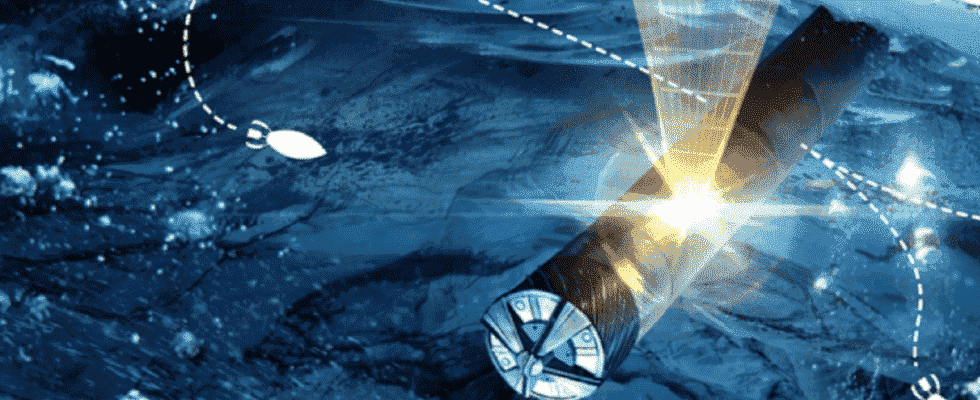Updated
NASA plans to send aquatic robots to the oceans of Europa and Encilade, the moons of Europa and Saturn, in search of traces of life.
NASA is embarking on scuba diving… but not just anywhere: the American Space Agency is investing $600,000 in the feasibility study of a project consisting of sending small aquatic robots to explore the different oceans of the System Solar. In the viewfinder of the scientists, those which appear on the moon of Jupiter, Europa, and on the satellite of Saturn, Enceladus. The scientific interest is crucial, explains David Rothery, professor of planetary geology, in The Conversation: because of the presence of water in immense quantities and its chemical interactions with rocks, it is likely that this environment is very similar to the one that welcomed the appearance of life on Earth four billion years ago.
“These are environments where water that has seeped into the rock of the ocean floor becomes warm and chemically enriched. This water is then expelled into the ocean. Microbes can feed on this chemical energy and in turn be eaten by larger organisms. No sunlight or atmosphere is really necessary” specifies David Rothery, since “photosynthesis can be replaced by a process of chemosynthesis”.
Read also: Extraterrestrial life? – Under Saturn’s moon, an ocean
As for the robots that could be sent to these distant depths, their design is still under study: the most effective principle would be a probe that would land on Europa or Enceladus in an area where the layer of ice covering the ocean is particularly thin. In this scenario, a drill heated by radioactivity digs a hole in the ice about 25 cm in diameter to a depth of several hundred meters in the best case, before reaching the ocean.
Placed on the ice, the probe drills a hole to the ocean.
©NASA
Once in contact with the water, about forty submarines in the shape of triangles about ten centimeters long are released. These small submersibles transmit the information collected by sound waves via the cable connected to the machine placed on the ice. They could only explore about ten meters around their release point, limited by the low power of their battery, and could probably not embark cameras or too complex sensors.
However, they should be able to collect crucial data on the composition of these cosmic oceans and perhaps manage to find the long-awaited Holy Grail: traces of life.
